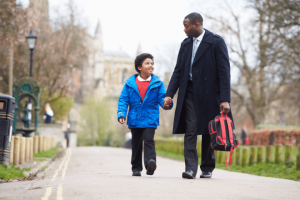Share
Anxiety is a fundamental part of us. It is our primal survival instinct that offers us protection from danger. As soon as our brain receives a message that something doesn’t feel safe, this will naturally create a reaction in our brains and bodies. We might notice a shortening of breath, our hearts might beat faster, we might feel a tingling in our arms and legs, we may even feel sick or actually vomit.
All of these physical responses are a normal physiological response to our anxiety being activated. Preparing us for our fight, flight, freeze response the messages are being sent to our bodies to prepare us for this; the heart is pushing blood around our bodies to help us to move, adrenaline is being send through our bodies, we may be physically sick as this will help us to run faster.
Sometimes our anxiety might manifest in out thoughts. We may find we start questioning ourselves, our abilities or spiral into catastrophic thinking. Again, these are normal responses to our anxiety, it is a natural part of us. However, sometimes these thoughts and physical responses can scare us and when we feel fear our anxiety activates further, our anxious response becomes stronger, which can lead to panic attacks.

The good news is that with practice and understanding of ourselves we can offer ourselves support and self-soothing. The important thing is to get to know this part of ourselves, what might be triggering this reaction? What am I feeling? What happens in my body? What do I need to do to manage this response?
There are a number of techniques that can help but knowing what will help you best is part of the process. The need is to lower the level of anxiety and this involves using other parts of your brain to slow down the pace of the anxiety. When you engage with your senses and connect to your breathing you can begin to offer this to yourself. Breathing in for a count of four and a longer out breath on a count of 6 will help you to regulate your anxiety. Using your senses to focus on your environment what can you see/taste/smell/hear/touch e.g if outside look at the shape of a tree, notice the colour, sound or pattern of the bark focus on the detail and engage your senses. This can be done inside by focusing on an object and using your breath alongside, this can help to lower your anxiety and connect with something removed from your sensations and thoughts.
Related News
Vita is an award-winning, CQC registered healthcare provider














